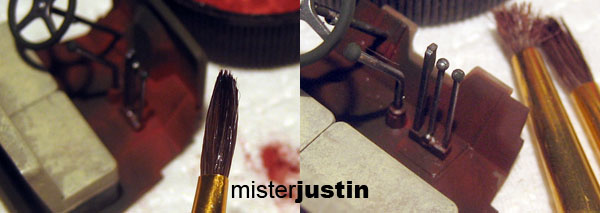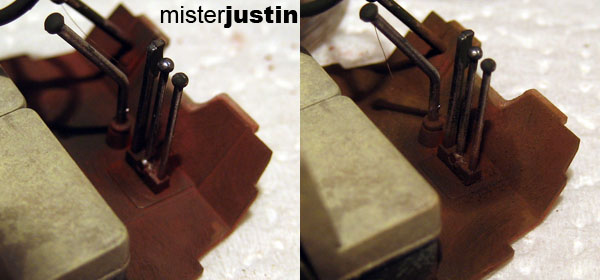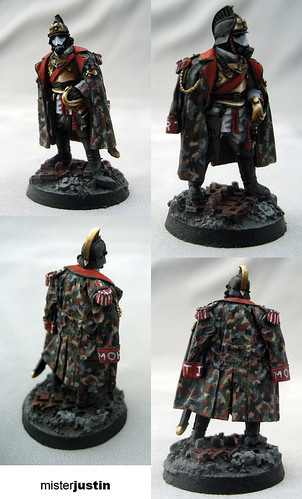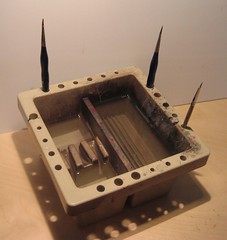While considering which weathering tutorials to write up and where I would start I realized I have a Tamiya 2.5 Ton Cargo Truck sitting on my desk. Although it's not a 40k I'm going to use most of the techniques in my arsenal to get it finished and realized this made it the perfect tutorial project.
First up is an introduction to weathering with pastel powders. I'm using "Doc O'Brien's" for this tutorial. I'm happy with the product, and you get a few colours it's harder to match with art store pastel sticks, but you can do this much less expensively with generic art pastels and some sandpaper.
This is the un-weathered cab. I have base coated the interior and painted the seats.

The colors I'm using are "Rust Red," "Rust Brown," "Grimy Black" and "Dirt Brown." I will use Testors enamel thinner sparingly as we go - and that bottle will likely last me several years.

I bought a $3 pack of crappy brushes to use with powders. I took one of them and cut it off about 10mm or 1/4" from the ferrule. Using this brush I applied "Rust Red" in a generous layer. You can blow off, brush off or wipe off excess - like I do in the next step.

Using another cheap brush I applied some enamel thinner and wiped away a bit of the "Rust Red" powder. This also helps get the remaining powder into the recesses and will bind it more permanently to the model. In the image on the right I have added the "Rust Brown" powder.

Application of more thinner (left) and "Dirt Brown" (right).

Application of "Grimy Black" gives us the finished image for the deck plate. In the bottom image you can see where I stippled the rust near where feet would kick getting into the truck. Always remember that corners will be more heavily weathered in most vehicles. I applied additional black, and then thinned heavily, where the driver's feet would rub.

These techniques and materials can be used to create incredibly realistic rust, dirt and grime and are very well suited to vehicles. Use them on engines, treads, bolts, hatches... anywhere you'd expect to find gunk and rust.
Next up... playing with oil!













